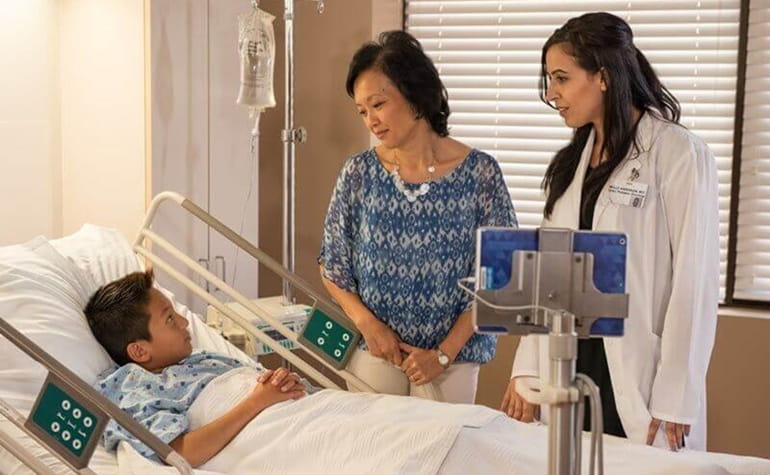 Children’s hospitals and pediatricians frequently need to overcome language barriers when treating LEP children whose families don’t speak English at home. Shifting US demographics continue to make this scenario more common: Experts say the foreign-born US population will double – from 40 to 80 million – by 2050.
Children’s hospitals and pediatricians frequently need to overcome language barriers when treating LEP children whose families don’t speak English at home. Shifting US demographics continue to make this scenario more common: Experts say the foreign-born US population will double – from 40 to 80 million – by 2050.
To help, CyraCom partnered with AHA Solutions to sponsor a webinar. You can view the Children's'Hospitals Webinar to learn how language services leaders provide quality care to LEP patients and their families.
Children with special healthcare needs and limited-English proficiency (LEP) face an elevated risk for adverse outcomes when hospitalized. That’s the finding of a new research paper published in the latest issue of Pediatrics, the academic journal of the American Academy of Pediatrics (AAP).
According to the paper, co-authored by experts from the University of Texas Medical School at Houston and the Medical Research Institute in Minneapolis, approximately 2.3 million US children with special healthcare needs speak a language other than English at home.
“These children are the most vulnerable of a very vulnerable population,” coauthor Ricardo A. Mosquera, M.D. toldScience Daily in a recent interview.
The authors identify the issue – children with special needs and children from LEP homes are at risk, with those in both categories in the most danger – and provide practical steps to improve outcomes for their pediatric patients:
1. Collect Language Data at Admissions
The authors found that “early identification and provision of adequate language services and culturally competent care are crucial” for success in a pediatric care setting. AAP research indicated that LEP children “had significantly longer hospital stays in association with an adverse event and may have increased odds of a serious or sentinel event.”
2. Create a Continuum of Care
Two of the paper’s authors hail from the University of Texas Medical School, which has pioneered a pediatric model focused specifically on children with special needs. This High Risk Children’s Clinic seeks to guide pediatric patients through every step of care, providing “a medical home that meets their needs, including bilingual providers and specialists,” Mosquera explained.
This model recognizes the need for quality language services to follow the patient for the duration of their medical treatment – from admissions through hospitalization and discharge, and on to follow-up physician visits and even house calls.
3. Consider Cultural Differences
“Research documents that culturally sensitive care is associated with improved patient satisfaction, greater medication adherence and a higher overall quality of care,” the authors state. “It is imperative that providers have the necessary knowledge and skills to understand and identify the unique barriers and beliefs of the common populations they work with.”
This approach acknowledges that cultural differences can cause misunderstandings and seeks to understand the cultures present in a hospital’s community. Leading language services programs may incorporate training on patient cultures into regular staff training sessions, giving their doctors and nurses valuable insight into how differing practices and beliefs may impact care.
Now that you’ve read about the risks facing LEP children and their families, view our CyraCom/AHA Solutions webinar, Language Access in Children’s Hospitals – A Panel Discussion, to learn more about how leading hospitals are meeting the needs of their most vulnerable patients.



